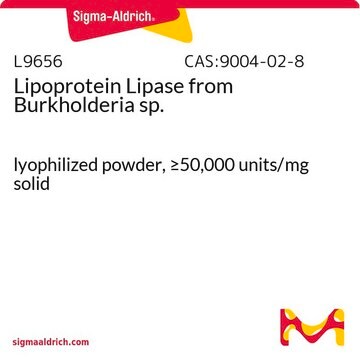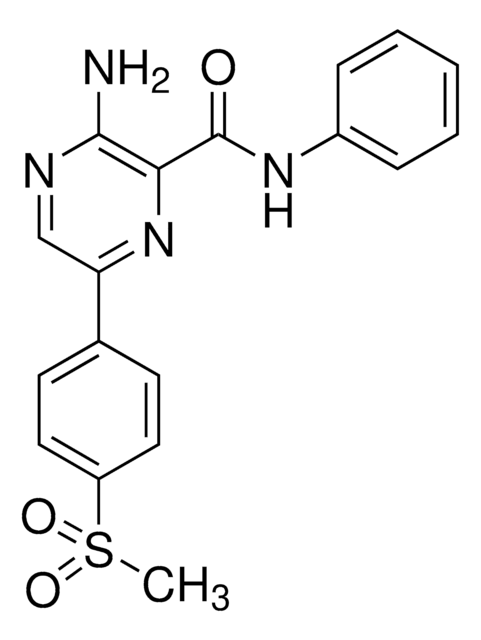B1680
Bradyzide di(trifluoroacetate) salt hydrate
≥98%
Synonym(s):
(S)-1-[4-(4-Benzhydrylthiosemicarbazido)-3-nitrobenzenesulfonyl]-pyrrolidine-2-carboxylic acid [2-[(2-dimethylaminoethyl)methylamino]ethyl] amide
Sign Into View Organizational & Contract Pricing
All Photos(1)
About This Item
Empirical Formula (Hill Notation):
C32H42N8O5S2 · 2C2HF3O2 · xH2O
Molecular Weight:
910.90 (anhydrous basis)
MDL number:
UNSPSC Code:
41106200
NACRES:
NA.32
Recommended Products
Assay
≥98%
form
solid
solubility
H2O: >40 mg/mL
storage temp.
−20°C
Biochem/physiol Actions
Potent, orally active, non-peptide B2 bradykinin receptor antagonist.
Features and Benefits
This compound was developed by Novartis. To browse the list of other pharma-developed compounds and Approved Drugs/Drug Candidates, click here.
Storage Class Code
11 - Combustible Solids
WGK
WGK 3
Flash Point(F)
Not applicable
Flash Point(C)
Not applicable
Personal Protective Equipment
dust mask type N95 (US), Eyeshields, Gloves
Certificates of Analysis (COA)
Search for Certificates of Analysis (COA) by entering the products Lot/Batch Number. Lot and Batch Numbers can be found on a product’s label following the words ‘Lot’ or ‘Batch’.
Already Own This Product?
Find documentation for the products that you have recently purchased in the Document Library.
G M Burgess et al.
British journal of pharmacology, 129(1), 77-86 (2000-02-29)
Bradyzide is from a novel class of rodent-selective non-peptide B(2) bradykinin antagonists (1-(2-Nitrophenyl)thiosemicarbazides). Bradyzide has high affinity for the rodent B(2) receptor, displacing [(3)H]-bradykinin binding in NG108-15 cells and in Cos-7 cells expressing the rat receptor with K(I) values of
Marielza Andrade Nunes et al.
Pharmaceuticals (Basel, Switzerland), 13(10) (2020-10-07)
Alzheimer's disease is mainly characterized by remarkable neurodegeneration in brain areas related to memory formation. This progressive neurodegeneration causes cognitive impairment, changes in behavior, functional disability, and even death. Our group has demonstrated changes in the kallikrein-kinin system (KKS) in
Our team of scientists has experience in all areas of research including Life Science, Material Science, Chemical Synthesis, Chromatography, Analytical and many others.
Contact Technical Service






